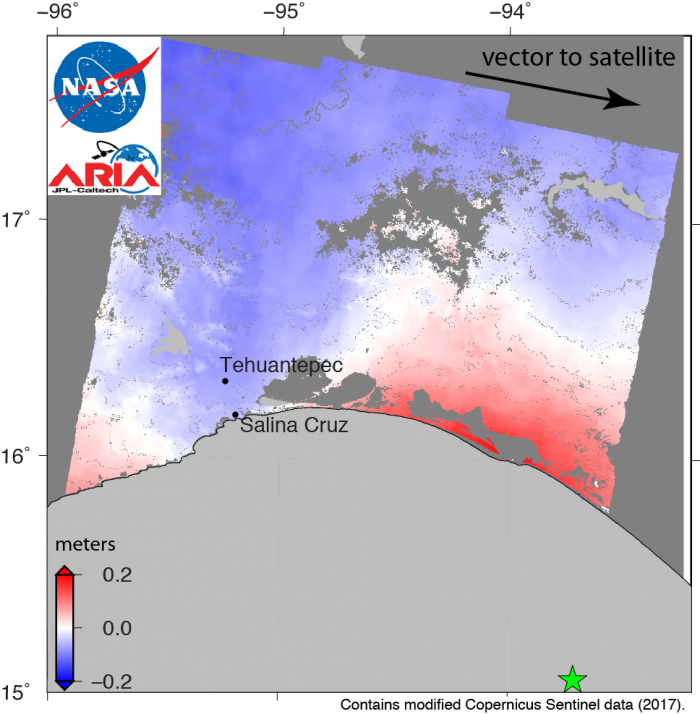NASA and its partners are contributing important observations and expertise to the ongoing response to the September 7, 2017 (local time), magnitude 8.1 Oaxaca-Chiapas earthquake in Mexico. This earthquake was the strongest over a century for Mexico. It has caused a significant humanitarian crisis with widespread building damage and triggered landslides throughout the region.
Scientists with the Advanced Rapid Imaging and Analysis project (ARIA), a collaboration between NASA's Jet Propulsion Laboratory, Pasadena, California, and the California Institute of Technology in Pasadena, analyzed interferometric synthetic aperture radar images from the radar instrument on the Copernicus Sentinel-1A and Sentinel-1B satellites operated by the European Space Agency (ESA) to calculate a map of the deformation of Earth's surface caused by the quake. This false-color map shows the amount of permanent surface movement caused almost entirely by the earthquake, as viewed by the satellite, during a 6-day interval between radar images acquired by the two Sentinel-1 satellites on September 7 and September 13, 2017.
In this map, the colors of the surface displacements are proportional to the surface motion. The red tones show the areas along the coast of Chiapas and Oaxaca have moved toward the satellite by as much as 9 inches (22 centimeters) in a combination of up and eastward motion. The area in between and further north with various shades of blue moved away from the satellite, mostly downward or westward, by as much as 6 inches (15 cm). Areas without color are open water or heavy vegetation that prevents the radar measurements from measuring change between satellite images. Scientists use these maps to build detailed models of the fault slip at depth and associated land movements to better understand the impact on future earthquake activity. The green star shows the location of the earthquake epicenter estimated by the US Geological Survey (USGS) National Earthquake Information Center.
Map contains modified Copernicus Sentinel data 2017, processed by ESA and analyzed by NASA-JPL/Caltech ARIA team. This research was carried out at the Jet Propulsion Laboratory, California Institute of Technology, under a contract with the National Aeronautics and Space Administration. Sentinel-1 data were accessed through the Copernicus Open Access Hub.



